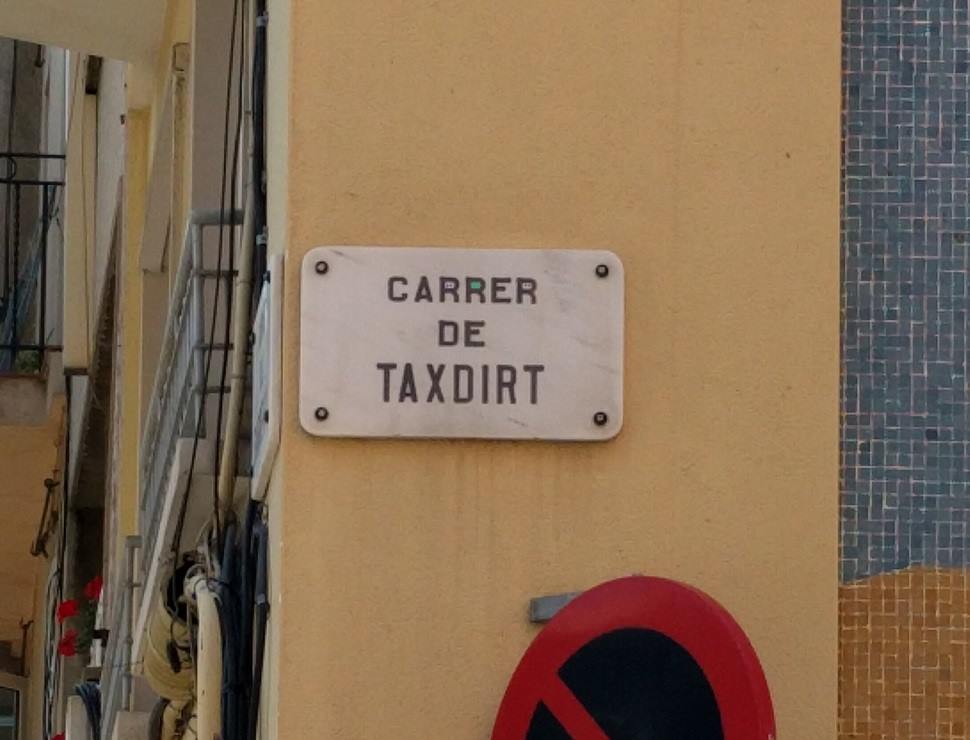If you read this blog regularly, you know that I am a huge fan of Jordi Sierra i Fabra’s “Inspector Mascarell” detective novels. I’ve just finished the fourth in this series, Dos días de mayo, and found it a real page turner, and moving as well. If you love Spanish and enjoy a good read, please give it a try.
The Mascarell novels take place in Barcelona, in the waning days of the Spanish Republic and the early years of the Franco dictatorship, and their plots are very much linked to this setting. Without venturing into spoiler territory, Dos días is anchored to a specific real event, Franco’s visit to Barcelona in on June 1, 1949. In one passage, Inspector Mascarell, a dyed-in-the-wool Republican, is aggrieved to see how beautiful Barcelona looks the day of the visit. His bitter reflections relate the city’s current abject position to a historical event, the Siege of Barcelona, which in 1714 definitively yoked Catalonia to the Spanish crown:
Salió al exterior y le golpeó el sol de la tarde. Otro bonito día de primavera, como si el tiempo se aliara con Franco para recibirle en la hermosa Barcelona que había puesto a sus pies.
La hermosa Barcelona.
A las putas también las engalanaban para que el cliente pagara más y se quedara satisfecho.
Se sintió culpable por ese pensamiento.
Barcelona.
Su Barcelona.
— También caímos en 1714 y nos levantamos. –Suspiró.
A rough translation:
He left the building and was dazzled by the afternoon sun. Another beautiful spring day, as if the weather were allied with Franco to welcome him to beautiful Barcelona, which he had brought to its knees.
Beautiful Barcelona.
Whores also get dolled up so that a client will pay more and be more satisfied.
He felt guilty for this thought.
Barcelona.
His Barcelona.
“We also fell in 1714, and we got up again,” he sighed.
Given the strong Catalan identity expressed in the novels, it’s safe to assume that many of the conversations included in the book would have taken place (in “real life”) in Catalan, although the books themselves are written in Castilian Spanish. The books make occasional reference to differences between Catalan and Castilian. In one such passage, Sierra describes a policeman’s Castilian accent:
— ¿Miguel Mascarell? — Lo pronunció con marcado acento castellano, con la ‘g’ bien diferenciada y la ‘ll’ convertida en ‘l’, como si no supieran declamar ‘cuello’, ‘botella’, o ‘lluvia’ y en su lugar también dijeran ‘cuelo’, ‘botela’ o ‘luvia’.
— ¿Miguel Mascarell? — He pronounced it with a marked Castilian accent, with a sharp ‘g’ and the ‘ll’ converted in ‘l’, as if he couldn’t say ‘cuello’, ‘botella’, or ‘lluvia’ and in their place said ‘cuelo’, ‘botela’ or ‘luvia’.
In this passage Sierra shows himself to be more of a novelist than a linguist. Apparently he doesn’t know that a language’s phonology (pronunciation rules) determines not only its inventory of different sounds, such as l and ll, but also how they may be used within a word, an aspect of phonology called “phonotactics”. Castilian Spanish certainly has the ll sound but only uses it at the beginning of a word, or between vowels, whereas in Catalan it also permits it at the ends of words. You can’t blame the poor policeman!
